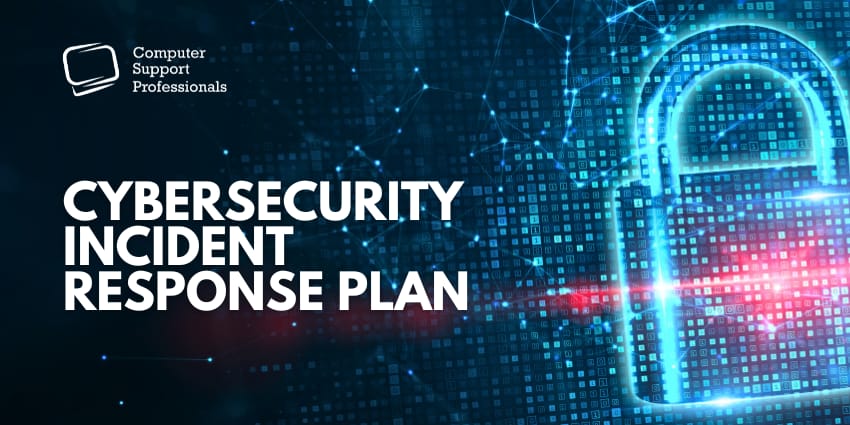In today’s digitally-driven world, organisations face a constant threat of cyber-attacks. These attacks can range from simple phishing attempts to sophisticated ransomware attacks. To effectively mitigate the damage caused by such incidents, it’s crucial for businesses to have a well-structured cybersecurity incident response plan (CIRP) in place. In this article, we will outline the steps needed to create an effective cybersecurity incident response plan that will help businesses respond quickly and effectively to cybersecurity incidents.
What is a Cybersecurity Incident Response Plan?
A cybersecurity incident response plan (CSIRP) is a documented process that outlines with instructions how an organization will respond to a serious cybersecurity incident, such as a data leak, phishing scam, loss of sensitive information, or ransomware attack. It should be developed in collaboration with key stakeholders across the organization, including IT Experts, Security Consultants, Legal Advisors, and Technical Support Teams. The plan should include communication protocols, escalation paths, and technical procedures.
Essential Steps for Developing a Cybersecurity Incident Response Plan
A CIRP helps to minimize the impact of a breach and ensures a swift and organized response to protect sensitive data and maintain business continuity. Here are some steps to create a cybersecurity incident response plan:
1. Establish an Incident Response Team
The first step in creating a CIRP is to assemble a team with representatives from various departments within the organization, such as IT professionals, compliance, public relations, and executive management. This team will be responsible for developing, implementing, and managing the incident response plan.
2. Identify Critical Assets and Data
Identify critical assets, systems, and data that are essential for the organization’s operations. Classify these assets based on their importance and sensitivity. Understanding what needs to be protected will help in devising appropriate response strategies.
3. Conduct a Risk Assessment
Perform a comprehensive risk assessment to identify potential vulnerabilities and threats that could impact the organization’s assets and data. Assess the likelihood and potential impact of each threat to prioritize areas for focus and resource allocation.
4. Develop an Incident Response Plan Framework
Create a standardized framework for responding to cybersecurity incidents. This framework should define the roles and responsibilities of the incident response team, communication protocols, escalation procedures, and the steps to be taken during and after an incident.
5. Define Incident Categories
Establish clear categories for incidents based on their nature and potential impact. Develop a severity level scale to help the incident response team assess the criticality of an incident and respond accordingly.
6. Develop Incident Response Procedures
These procedures should include step-by-step instructions on how to detect, analyze, contain, eradicate, and recover from an incident. Additionally, define appropriate communication and reporting mechanisms.
7. Establish Communication Protocols
Outline a communication plan that includes notification processes for internal stakeholders, external parties, regulatory bodies, and customers (if necessary). Clearly define who needs to be informed, when, and how.
8. Training and Awareness Programs
Regularly train and educate employees on the incident response plan, their roles during an incident, and best practices for preventing and responding to cybersecurity incidents. Keep the team updated with the latest threats and vulnerabilities.
9. Regular Testing and Updates
Regularly test the incident response plan through simulated exercises to evaluate its effectiveness and identify areas for improvement. Adjust the plan based on the lessons learned from these exercises.
10. Review and Update the Plan
Cyber threats evolve rapidly, so it’s important to review and update the incident response plan periodically. Incorporate feedback from incident simulations, lessons learned from actual incidents, and changes in the organizational structure or technology landscape.
Summary
In conclusion, having a well-structured cybersecurity incident response plan is a crucial component of an organization’s cybersecurity strategy. By following these steps, organisations can significantly enhance their ability to detect, respond to, and recover from cyber incidents, ultimately minimizing potential damage and protecting their valuable assets and data. If you need help creating a cybersecurity incident response plan, consider reaching out to Computer Support Professionals, a leading provider of Cybersecurity Services in Australia. We take proactive steps to safeguard your digital assets and maintain business continuity in the event of a cyber incident.
Also Read:




